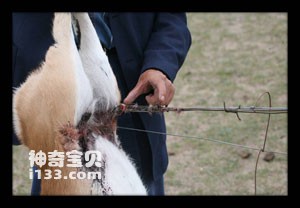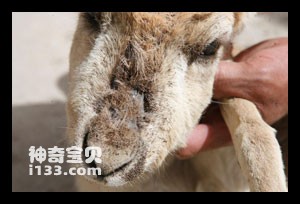In the activity area and habitat of Przewalski's gazelle, the main factors threatening the survival of Przewalski's gazelle are as follows:
1. The shrinkage and fragmentation of habitat. The grasslands in various activity areas are seriously degraded, and the desertification area is gradually expanding. The lush and abundant grasslands in the past are now replaced by weeds such as wolfsbane, and the quality of grasslands has dropped sharply. Rodent damage is serious, bare land and tidal flats have increased, and livestock are overloaded.
2. Fences block the natural activities of Przewalski's gazelle. During the activities, mating and reproduction of Przewalski's gazelle, fences greatly facilitate the hunting of Przewalski's gazelle by wolves and foxes, limit the activity area of Przewalski's gazelle, and increase the number of deaths of Przewalski's gazelle.
3. Serious conflicts between livestock and Przewalski's gazelle. Przewalski's gazelles do not have fixed foraging grounds, drinking water places, and activity areas. There are too many livestock, and the pasture is seriously overloaded, resulting in competition with livestock for food, and you advance and I retreat, you retreat and I advance.

4. Poaching still exists.
5. Lack of water sources.
6. The incidence of external parasitic diseases is high, and Przewalski's gazelles have died.
7. Eating garbage is common. During many investigations, we found that many Przewalski's gazelles died of indigestion after eating garbage. There are many reasons why livestock and wild animals lick alkaline salts and eat other things. They like to lick various foreign objects due to mineral deficiency, especially salt and alkaline salt deficiency, calcium deficiency, trace element deficiency (iron, copper, zinc, etc.) and vitamin deficiency, as well as emaciation and abnormal taste caused by certain chronic wasting diseases.

8. The increase in human activities has seriously disturbed and hindered the ecological environment of Przewalski's gazelle habitats to a large extent, resulting in the destruction of vegetation in the ecological environment of Przewalski's gazelle habitats, fragmentation of populations, and continuous reduction of grassland area, resulting in the Przewalski's gazelle habitat becoming smaller and smaller.
Inbreeding. According to statistics, if a population is too small, genetic diversity will also decrease, and the reduction of genetic diversity is prone to genetic drift, which makes the population very fragile and leads to the loss of population diversity. Because the current population of Przewalski's gazelle is too small, the populations are isolated from each other and cannot exchange genes, thus leading to inbreeding. This is also the main reason for the decline of the population of Przewalski's gazelle. Once the wild population disappears, it means the extinction of the species, which is an eternal regret for the world.
animal tags:
We created this article in conjunction with AI technology, then made sure it was fact-checked and edited by a Animals Top editor.